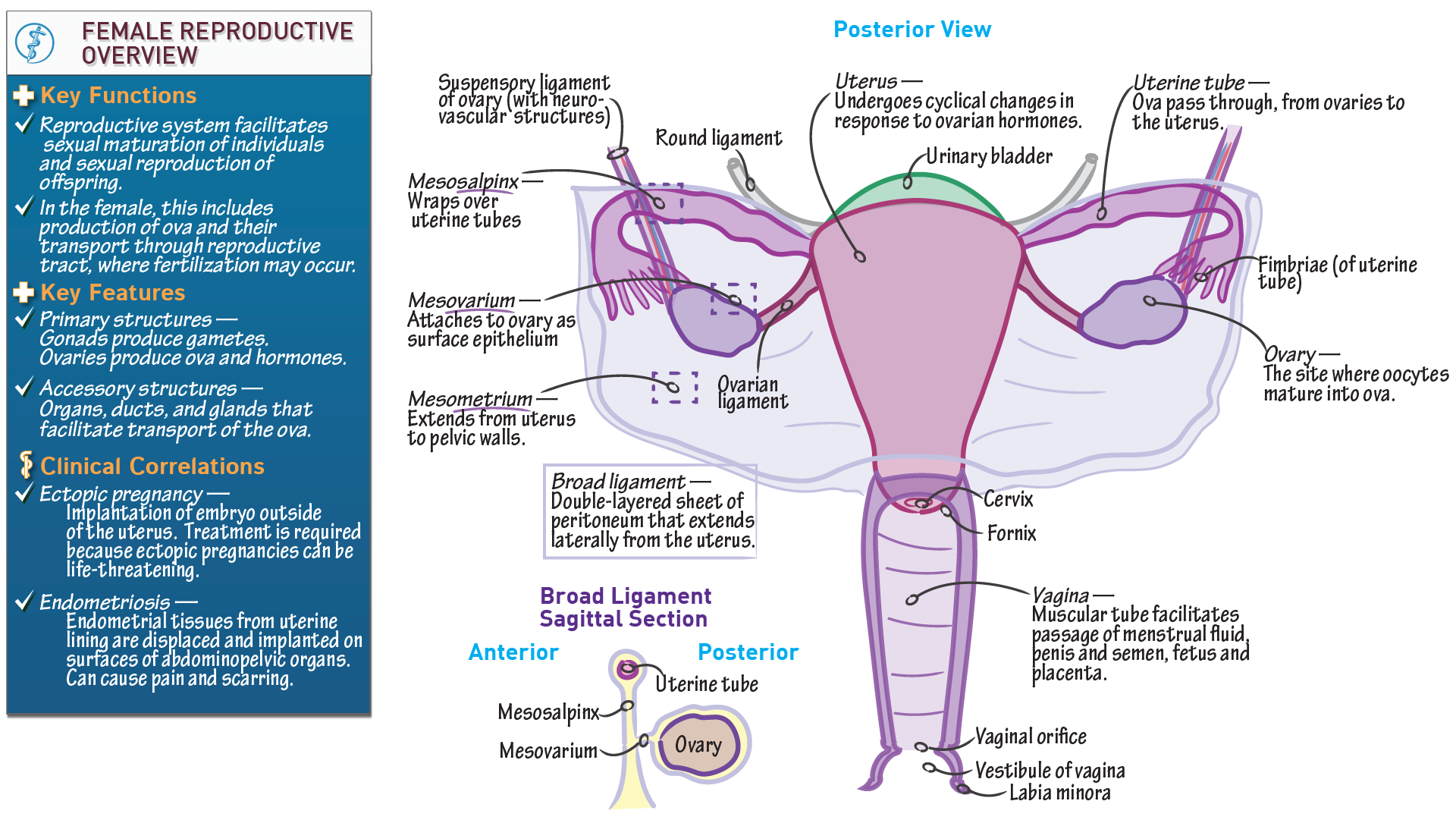Makindo Medical Notes"One small step for man, one large step for Makindo" |
|
|---|---|
| Download all this content in the Apps now Android App and Apple iPhone/Pad App | |
| MEDICAL DISCLAIMER: The contents are under continuing development and improvements and despite all efforts may contain errors of omission or fact. This is not to be used for the assessment, diagnosis, or management of patients. It should not be regarded as medical advice by healthcare workers or laypeople. It is for educational purposes only. Please adhere to your local protocols. Use the BNF for drug information. If you are unwell please seek urgent healthcare advice. If you do not accept this then please do not use the website. Makindo Ltd. |
Female Reproductive Anatomy and Physiology
-
| About | Anaesthetics and Critical Care | Anatomy | Biochemistry | Cardiology | Clinical Cases | CompSci | Crib | Dermatology | Differentials | Drugs | ENT | Electrocardiogram | Embryology | Emergency Medicine | Endocrinology | Ethics | Foundation Doctors | Gastroenterology | General Information | General Practice | Genetics | Geriatric Medicine | Guidelines | Haematology | Hepatology | Immunology | Infectious Diseases | Infographic | Investigations | Lists | Microbiology | Miscellaneous | Nephrology | Neuroanatomy | Neurology | Nutrition | OSCE | Obstetrics Gynaecology | Oncology | Ophthalmology | Oral Medicine and Dentistry | Paediatrics | Palliative | Pathology | Pharmacology | Physiology | Procedures | Psychiatry | Radiology | Respiratory | Resuscitation | Rheumatology | Statistics and Research | Stroke | Surgery | Toxicology | Trauma and Orthopaedics | Twitter | Urology
Related Subjects: | Introduction to Obstetrics and Gynaecology | Female Reproductive Anatomy and Physiology | Causes of Abnormal Vaginal Bleeding | Vaginal Carcinoma | Cervical Cancer | Endometrial (Uterine) Cancer | Post Menopausal Bleeding | Anatomy of the Uterus | Anatomy of the Ovary | Gynaecological History Taking | Colposcopy | Premature Menopause | Polycystic Ovary Syndrome | Basic Concepts of Pregnancy | Health Issues In Pregnancy | Risk Assessment In Pregnancy | Anaemia In Pregnancy | Hypertension In Pregnancy | Diabetes In Pregnancy | Epilepsy In Pregnancy | Hyperemesis In Pregnancy | Obesity In Pregnancy | Prescribing in Pregnancy | Multiple Pregnancy | Preterm Labour | Management of Labour and Complications | Assessment of the Newborn
Female Reproductive Anatomy and Physiology
- The female reproductive system consists of several important structures that are involved in reproduction, hormone production, and menstruation.

Ovaries
- The ovaries are a pair of small, almond-shaped organs located on either side of the uterus.
- They produce eggs (ova) and release them during ovulation.
- The ovaries also secrete hormones like estrogen and progesterone, which regulate the menstrual cycle and support pregnancy.
Fallopian Tubes
- Fallopian tubes are thin tubes that extend from the ovaries to the uterus.
- They transport the egg from the ovary to the uterus.
- Fertilization usually occurs within the fallopian tubes, after which the fertilized egg (zygote) moves to the uterus for implantation.
Uterus
- The uterus is a hollow, pear-shaped organ located in the pelvic cavity.
- It is the site where a fertilized egg implants and grows into a fetus.
- The uterus has three layers: the endometrium (inner lining), the myometrium (muscular layer), and the perimetrium (outer layer).
- If fertilization does not occur, the endometrium is shed during menstruation.
Cervix
- The cervix is the lower, narrow part of the uterus that opens into the vagina.
- It allows menstrual blood to exit the body and serves as the passage for sperm to enter the uterus during intercourse.
- During childbirth, the cervix dilates to allow the baby to pass through the birth canal.
Vagina
- The vagina is a muscular tube connecting the cervix to the outside of the body.
- It functions as the birth canal, the passageway for menstrual flow, and the site for sexual intercourse.
Physiology
- The menstrual cycle is a process regulated by hormones to prepare the body for pregnancy.
- The cycle is divided into three phases: follicular, ovulatory, and luteal.
Follicular Phase
- The follicular phase begins on the first day of menstruation and lasts until ovulation (around day 14 of a 28-day cycle).
- The pituitary gland releases follicle-stimulating hormone (FSH), which stimulates the growth of ovarian follicles.
- One dominant follicle matures, and estrogen levels rise, causing the uterine lining (endometrium) to thicken in preparation for pregnancy.
Ovulatory Phase
- Ovulation typically occurs around day 14, triggered by a surge in luteinizing hormone (LH).
- A mature egg is released from the dominant follicle and enters the fallopian tube, where fertilization may occur.
Luteal Phase
- The luteal phase occurs after ovulation and lasts until the beginning of the next menstrual cycle.
- The ruptured follicle forms the corpus luteum, which secretes progesterone to maintain the thickened uterine lining for pregnancy.
- If the egg is not fertilized, progesterone levels drop, the uterine lining is shed, and menstruation begins.